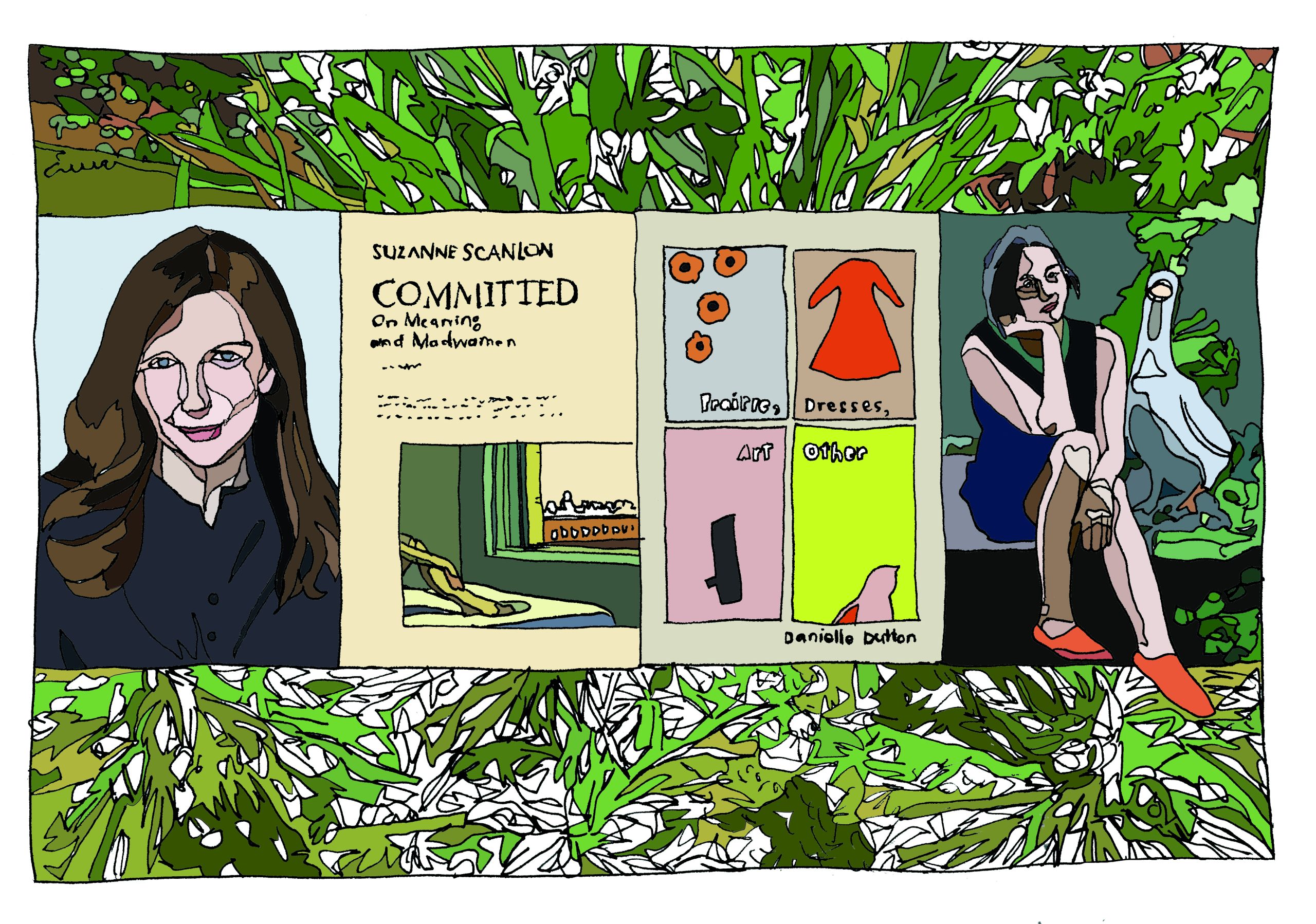Craft
How to Give Your Characters Unforgettable Names
Finding lessons in some of literature’s most indelible nomenclature

Harry Potter. Sherlock Holmes. Willy Wonka. The best character names will worm their way into the apple of your memory — but that doesn’t mean they grow on trees. An iconic name might sound simple (James Bond) or simply outlandish (Katniss Everdeen), but whether it came from a name book or from a seemingly random collection of syllables, chances are your favorite character’s moniker wasn’t just picked from a hat.
So, to paraphrase Juliet, what is in a name? Well, that’s a hard question to answer. Dracula, for instance, has its etymology rooted in Romanian history, while Harry Potter was just a combination of a first name that J.K. Rowling liked and the surname of her childhood neighbors. And A.A. Milne named Christopher Robin’s beloved donkey Eeyore, because what does a donkey say? “Hee Haw.” Classic onomatopoeia.
No matter how the most famous characters got their appellations, there are certain types of names that are guaranteed to stick in your readers’ minds. Here are a few of the best ones — as well as tips on how to come up with some unforgettable names yourself.
Those that roll trippingly off the tongue
Shakespeare sure had a lot to say about words, words, words, didn’t he? Fitting, given his own contributions to the English language. And indeed, Hamlet has some choice words for a band of traveling actors, as he urges them to deliver speeches “trippingly on the tongue.” This advice remains among the Bard’s best, as a surefire way for creating a turn of phrase (or in this case, a name) that gets stuck in your head like a pop song.
Huckleberry Finn
The trick to creating a “catchy” name is in the pronunciation. Anna Karenina’s Stepan Arkadyevich Oblonsky might sound good in Russia, but in English, Arkadyevich is just a tough word to say. Huckleberry Finn, on the other hand, pours off the tongue like Mississippi molasses.
If it doesn’t sound good out loud, it probably won’t sound good in your reader’s head either. So say your character names out loud before you decide on one. And if it sounds good in the air, trust that it’ll be good on the page, too.
If it doesn’t sound good out loud, it probably won’t sound good in your reader’s head either.
Victor Frankenstein
Creative uses of consonance can also carry a name. Get it? Repeating consonants (or at least the sounds they signify, like Vic and Frank) is one effective way to forge a memorable turn of phrase.
But consonants can also call to mind certain associations in a way that vowels don’t. In the words of Dwight Schrute, “‘R’ is among the most menacing of sounds. That’s why they call it murder, not mukduk.” The hard T’s and R’s in “Victor Frankenstein” give it an unmistakably menacing sound — perfect for the protagonist of a gothic horror novel.
Atticus Finch
Finally, when it comes to giving your character a name, pay attention to syllables. Like Huckleberry Finn, To Kill A Mockingbird’s Atticus Finch has a multisyllabic first name and a monosyllabic last name. This way, there’s almost a rhythm to saying it. And nothing’s more catchy than rhythm.
Those that look good on the page
Character names that sound interesting are all well and good… but this is Electric Literature, not Electric Longform Spoken Content. Books are first and foremost a visual medium, so some of the best names in literature are the ones that look good on the page, too.
Bilbo Baggins
J.R.R. Tolkien’s eponymous Hobbit is a perfectly notable character all by his lonesome, but would his name be equally notable if it wasn’t for the back-to-back B’s? As you probably know, alliteration — repeating the first letter across multiple words — is a classic tool in the writer’s kit, and repeating the first letter across a first and last name should be, too.
Humbert Humbert
Or you could simply opt to repeat the first name itself. Repetition is another widespread literary device that is underutilized when it comes to character names. Take this example from Lolita, where Nabokov uses repetition to double down on the humiliation of his villain protagonist Humbert Humbert. Not to mention, seeing double makes it that much easier to pick the name out on the page.
How to Decorate Your House Like Victor Frankenstein
Pip
Dickens wrote one of the greatest novels of the 19th century and then gave the protagonist a three-letter name. Let’s just call that what it is: a power move. But it works, because Pip just looks good on the page. Why?
Well, for one thing, it’s a palindrome (albeit a very short one), and it’s one letter off from being onomatopoeic, too (for peep). But at the end of the day, when it comes to naming your character, sometimes shorter is just better.
Granted, Pip isn’t a classic character just because his name looks good on the page. The moniker Pip is also fitting of someone small and seemingly insignificant who can grow to become enormous and stately. A character with great expectations, in other words.
But, despite being a prolific creator of fun names (Martin Chuzzlewit, Mr. Pumblechook, Betsy Trotwood… the list goes on and on) Dickens is far from the only author to use names to convey something about characteristics. We’ll look at some more examples of this next.
Those that evoke characteristics
Consonants have connotations, but sometimes a name can be even blunter than that in conveying meaning. Here are some examples of names that tell you everything you need to know about a character.
Hannibal Lecter
Thomas Harris’s Lecter is the most noted cannibal in literature. Is it a coincidence that his first name is Hannibal?
It’s not like you should always rhyme your character’s name with their primary characteristic — that’s probably a slippery slope that could result in you creating Mr. Mostman the Postman, or Abigail Dressler, the wrestler. But when done with sufficient nuance, the payoff can be huge.
Don’t always rhyme your character’s name with their primary characteristic — that’s probably a slippery slope that could result in you creating Mr. Mostman the Postman, or Abigail Dressler, the wrestler.
Holly Golightly
The protagonist of Truman Capote’s Breakfast at Tiffany’s, made famous by Audrey Hepburn in the film of the same name, bears the name Golightly — a common surname, but also suggestive of her airy disposition and reluctance to take things too seriously. This is a neat trick on Capote’s part: he creates a realistic sounding name that nevertheless conveys something about the character.
Veruca Salt
The resident narcissist of Charlie and the Chocolate Factory, Veruca Salt simply sounds like a spoiled brat. That might seem accidental until you consider that Salt derives from the same root as “salary,” carrying connotations of wealth, while a verruca is a kind of foot wart that will send chills down the spine of anyone who’s ever used communal showers. So on a deeper level, Veruca Salt roughly translates to “rich wart.” And on the surface, the idea of pouring salt on a foot wart is just gross.
That’s why considering a name’s etymology isn’t just about leaving an Easter egg for the reader. It can be used to produce a reaction from them, even if they aren’t quite sure why.
Those that have made it into the modern lexicon
Penetrating pop culture is a fickle thing: who would’ve ever guessed that a name like Inigo Montoya would catch on in the way that it did? (R.I.P. William Goldman.) But sure enough, character names have been working their way into the modern lexicon since we started calling loverboys “Romeo” — and there are lessons to be learned from each of them.
Character names have been working their way into the modern lexicon since we started calling loverboys “Romeo.”
Scrooge
Dickens’ cold-hearted Scrooge, the Christmas-hating miser from A Christmas Carol, has become synonymous with those who hate the giving season and keep their money to themselves.
No one knows for sure how he got the name or why it caught on, but it’s suggested that Dickens saw the name Ebenezer Scroggie on a gravestone inscribed “a meal man” and misread it as “a mean man.” Whether this story is true or not, it’s a prime example of why, sometimes, the best character names come from real life.
Grinch
Dr. Seuss’ small-hearted Grinch, the Christmas-hating green monster has become synonymous with those who… well, you get the picture. And who knows how Theodore Geisel came up with this one? His most normal character name, The Cat in the Hat, was picked from a list of words that first graders can read, so all bets are off.
The fact is, it’s impossible to fully predict what names will stick in popular culture. Sometimes, the best approach might be to just pick one at random. But no matter what, with these tricks up your sleeves, you should never have to fall back on “Mary Sue” again.

About the Author
Emmanuel Nataf is the CEO of Reedsy, a marketplace that connects authors and publishers with the world’s best editors, designers and marketers. Over 5,000 books have been produced via Reedsy since 2015.









